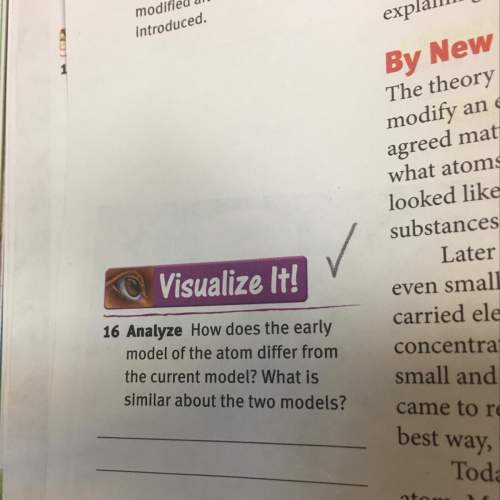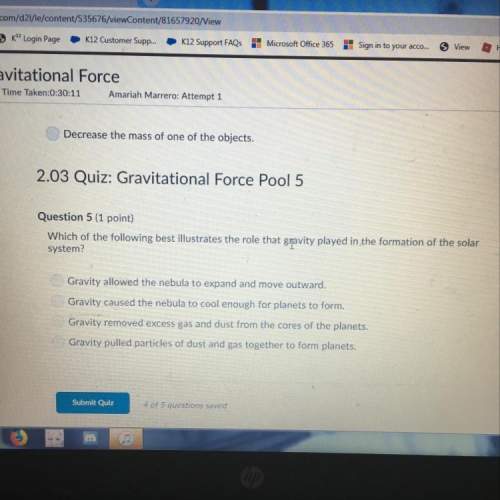
Chemistry, 25.02.2021 17:50, Yoosungdid911
In various chemical processes such as reactions and the dissolving of salts, heat is either absorbed or
given off. We call these events either an endothermic (heat in) or exothermic (heat out) process. It is usual
to detect these heat events by measuring the temperature change associated with the process. In this
problem, you will dissolve several salts in water, measure the resulting temperature change, and then
make deductions about the nature of the process.
1. Start Virtual ChemLab and select Endothermic vs. Exothermic from the list of assignments. The lab
will open in the Calorimetry laboratory.
2. There will be a bottle of sodium chloride (NaCl) on the lab bench. A weigh paper will be on the
balance with approximately 2 g of NaCl on the paper.
3. The calorimeter will be on the lab bench and filled with 100 mL water. Click the Lab Book to open it.
Make certain the stirrer is On (you should be able to see the shaft rotating). In the thermometer
window click Save to begin recording data. Allow 20-30 seconds to obtain a baseline temperature of
the water.
4. Drag the weigh paper with the sample to the calorimeter until it snaps into place and then pour the
sample into the calorimeter. Observe the change in temperature until it reaches a maximum and then
record data for an additional 20-30 seconds. Click Stop. (You can click on the clock on the wall
labeled Accelerate to accelerate the time in the laboratory.) A blue data link will appear in the lab
book. Click the data link and record the temperature before adding the NaCl and the highest or lowest
temperature after adding the NaCl in the data table.
5. Click the red disposal bucket to clear the lab. Click on the Stockroom to enter. Click on the
clipboard and select Preset Experiment #7 and repeat the experiment with NaNO3. Record the initial
and final temperatures in the data table.
6. Click the red disposal bucket to clear the lab. Click on the Stockroom to enter. Click the clipboard
and select Preset Experiment #8 and repeat the experiment with NaCH3COO (NaAc). Record the
initial and final temperatures in the Data Table.
Data Table
Mixture T1 T2 ∆T (T2-T1)
NaCl (s) + H2O (l)
NaNO3 (s) + H2O (l)
NaCH3COO + H2O (l)
Use your experimental data to answer the following questions.
7. Calculate ∆T (∆T = T2 – T1) for each mixture and record them in the data table.
53
8. An exothermic process gives off heat (warms up). An endothermic process absorbs heat (cools off).
Which solutions are endothermic and which are exothermic? What is the sign of the change in
enthalpy ()H) in each case?
9. Which solution(s) had little or no change in temperature?

Answers: 2
Other questions on the subject: Chemistry



Do you know the correct answer?
In various chemical processes such as reactions and the dissolving of salts, heat is either absorbed...
Questions in other subjects:



English, 21.10.2020 14:01


English, 21.10.2020 14:01

Mathematics, 21.10.2020 14:01

English, 21.10.2020 14:01


History, 21.10.2020 14:01

Computers and Technology, 21.10.2020 14:01








